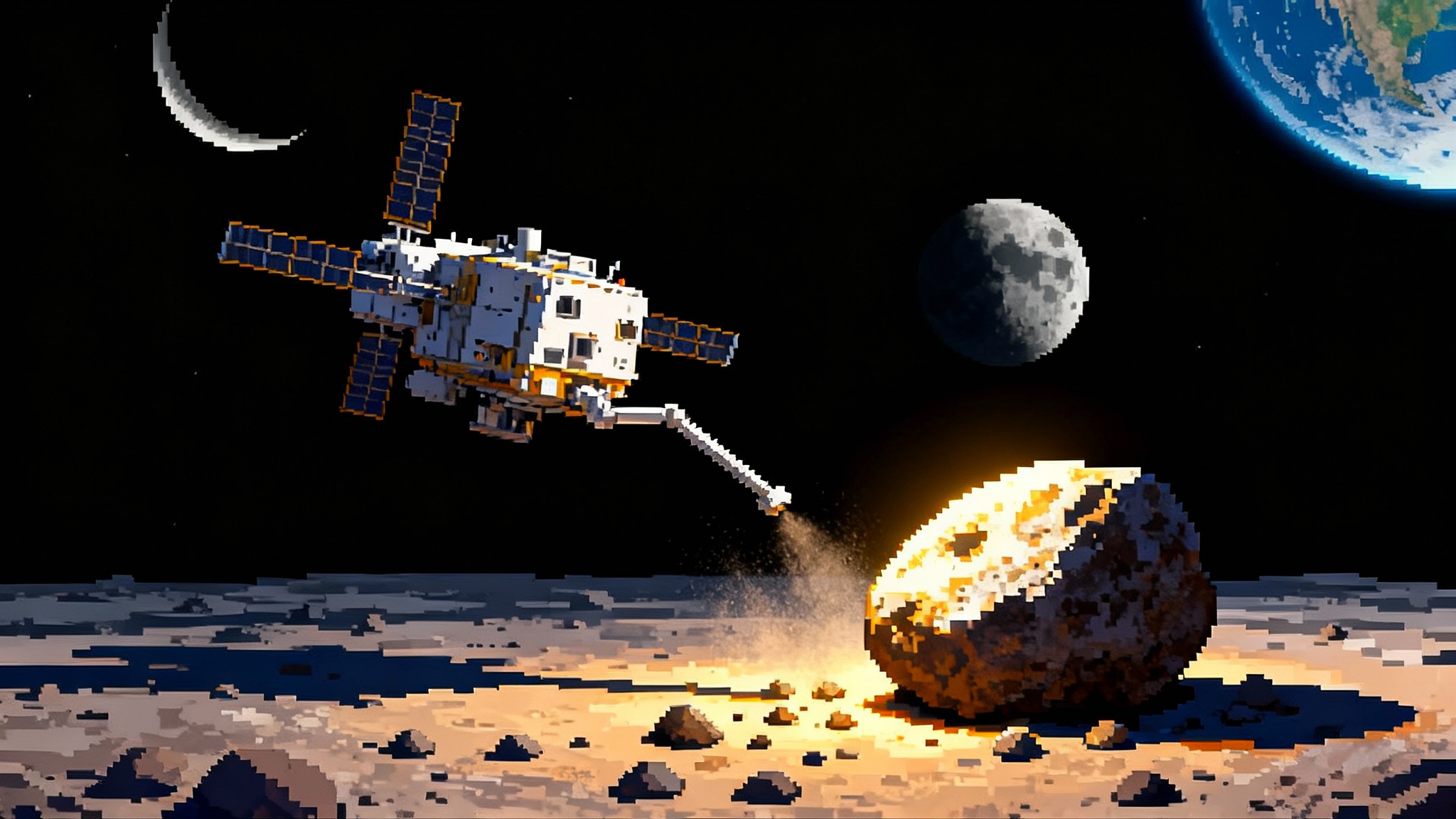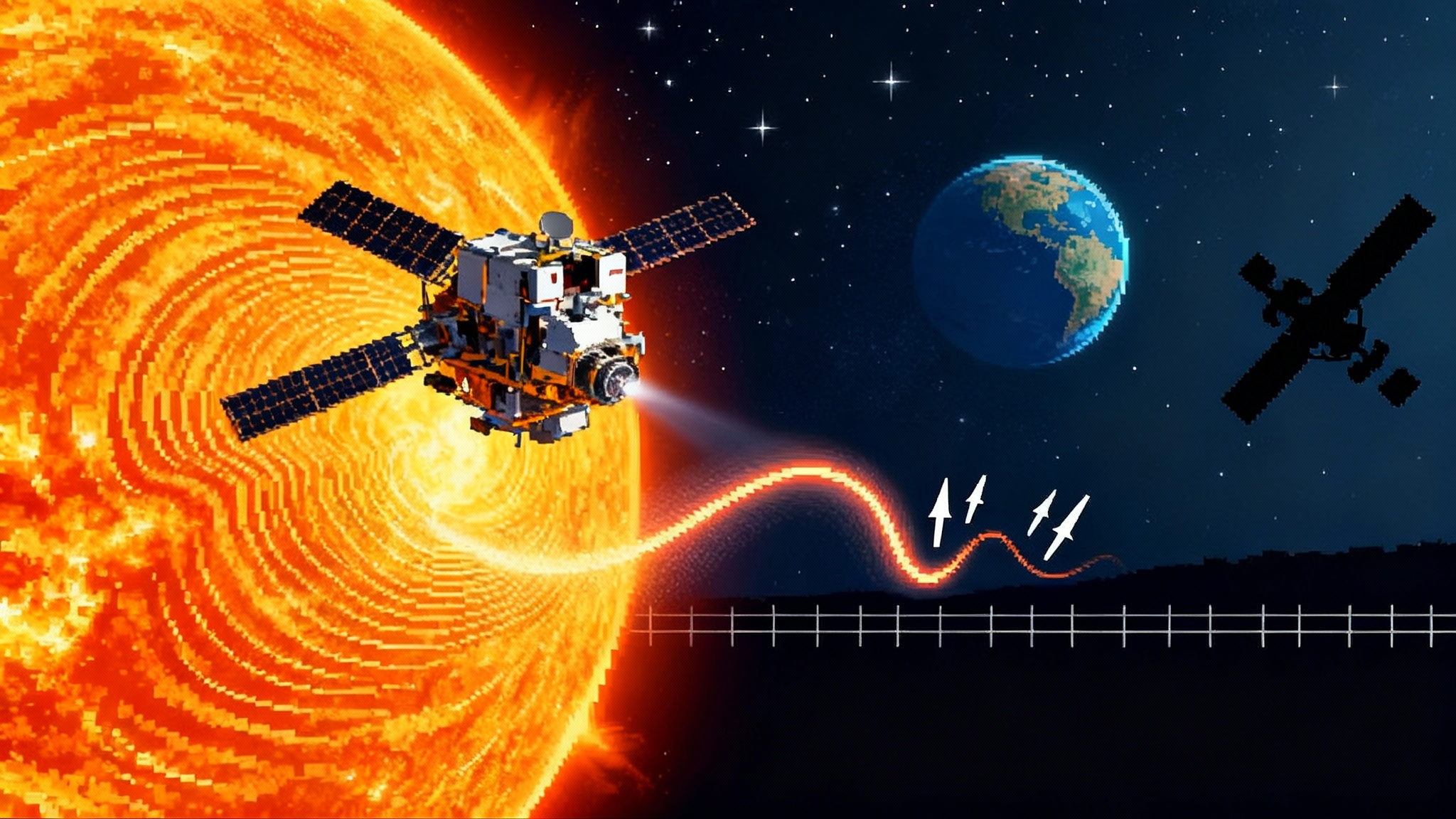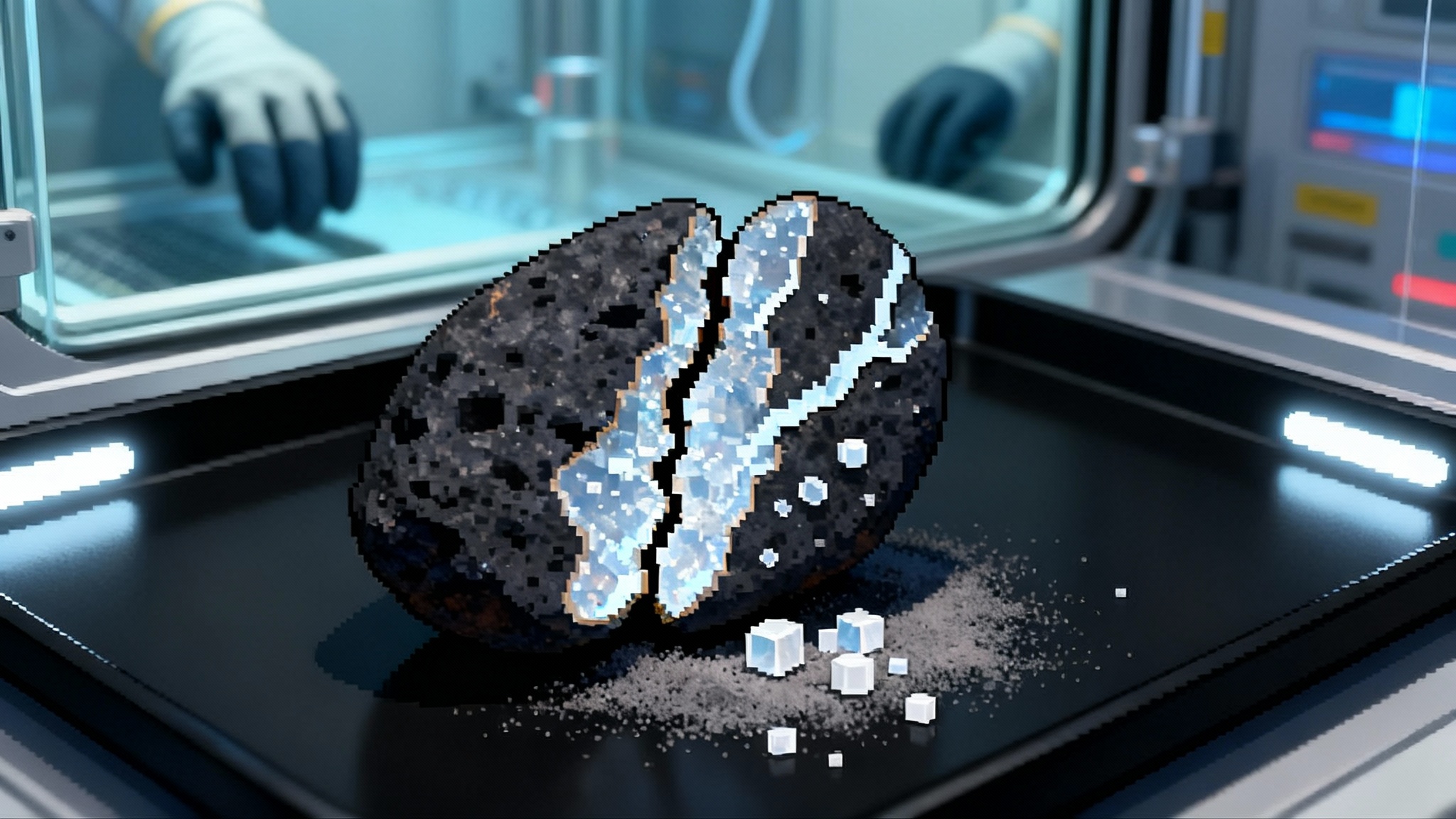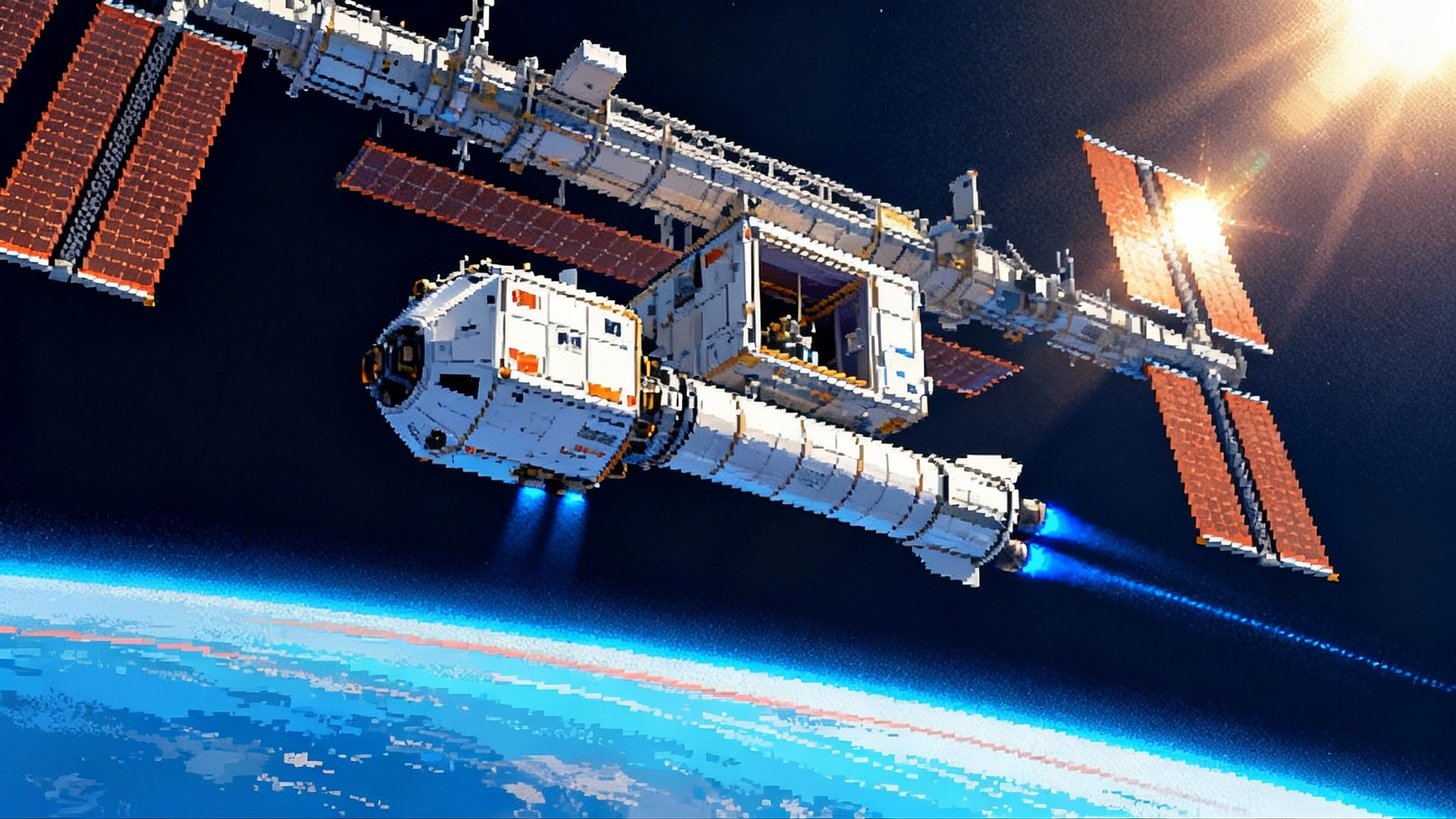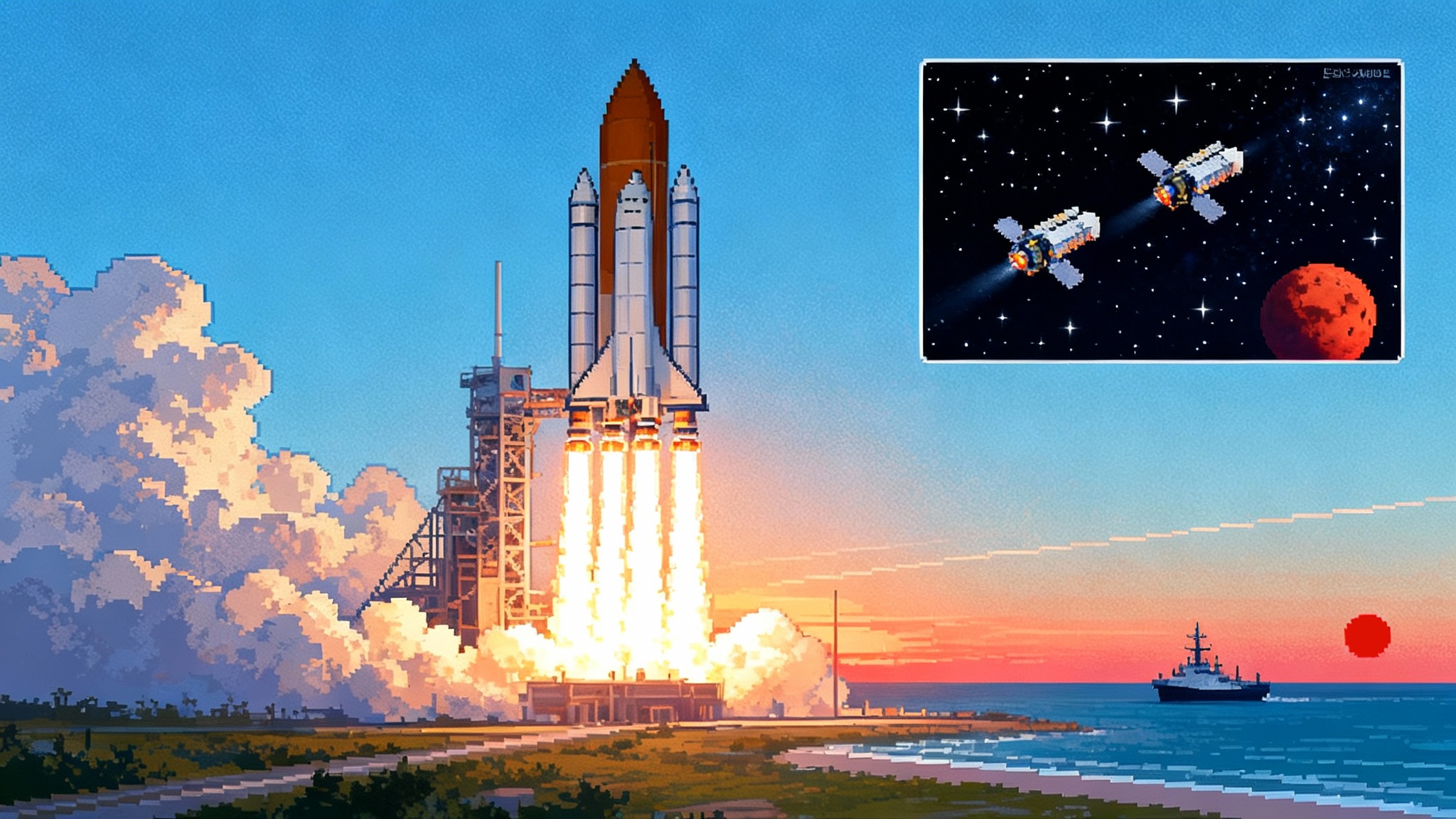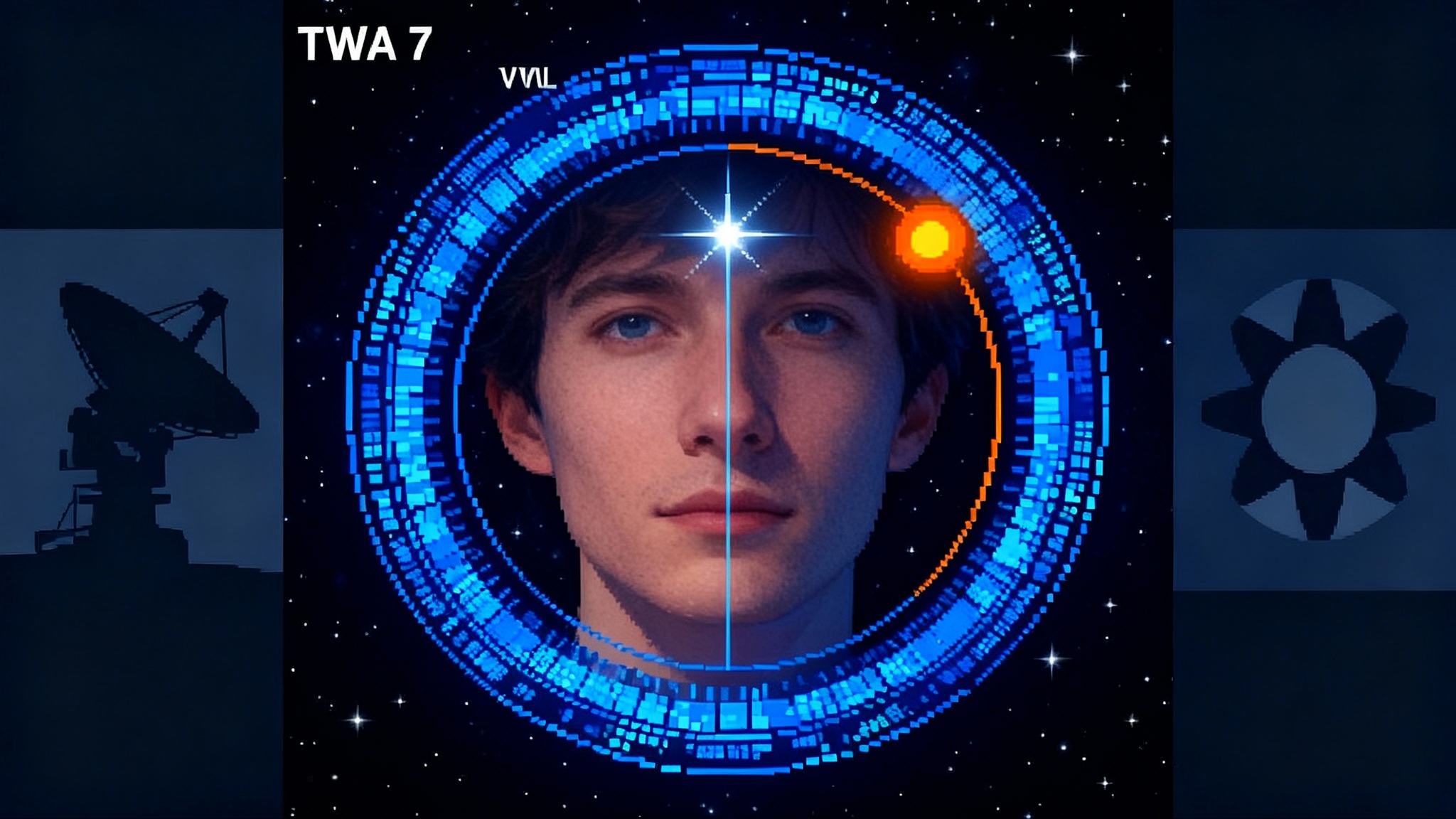JUICE’s hot Venus slingshot and the near-miss timer bug
In late August 2025 ESA’s JUICE skimmed past Venus for a high-heat gravity assist while controllers beat a last-minute comms glitch traced to a software timer. Why cameras stayed off, how the team kept the spacecraft cool, and what this flyby sets up next.
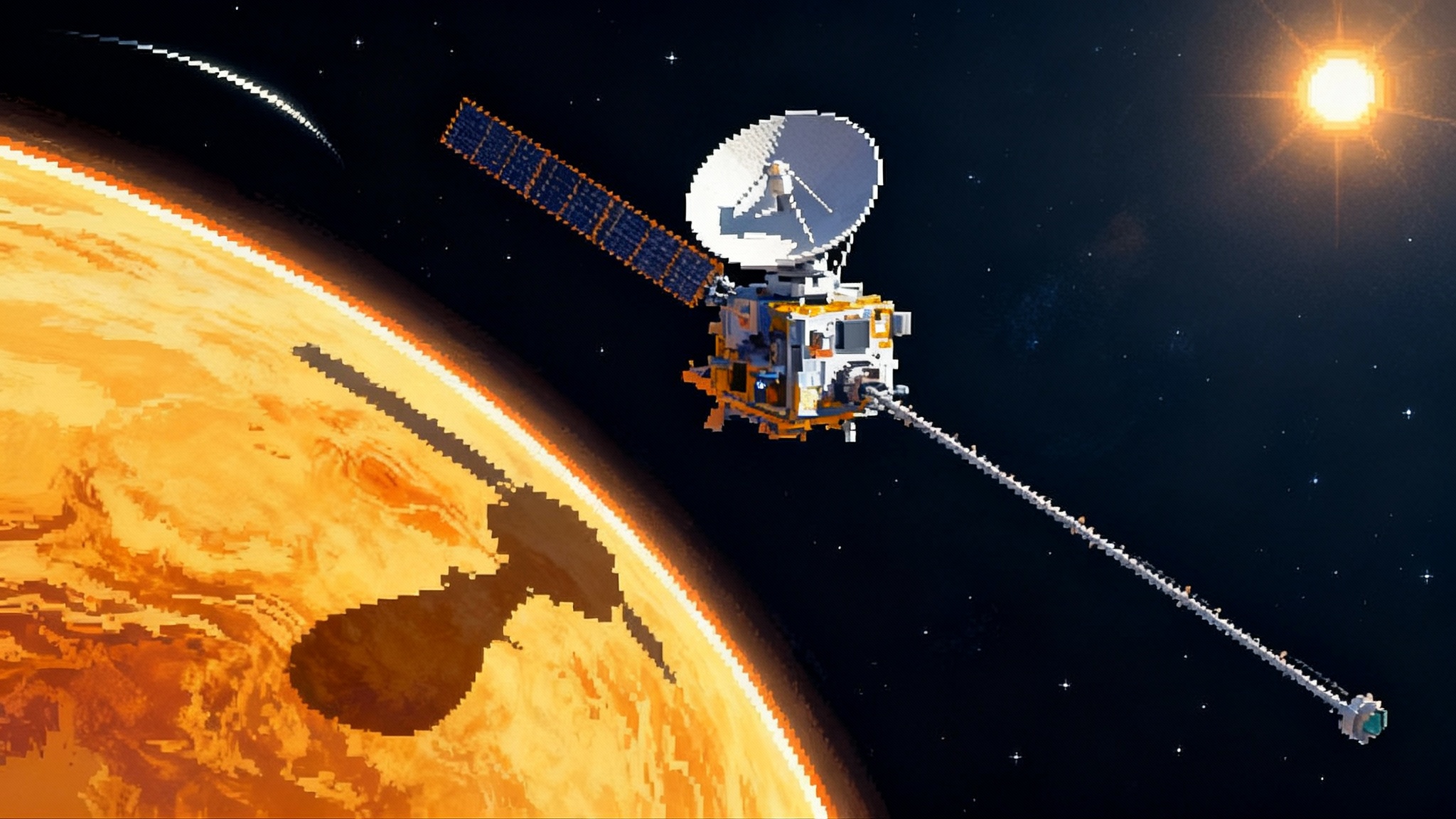
A close pass in the furnace
On August 31, 2025 at 05:28:51 UTC, ESA’s Jupiter Icy Moons Explorer skimmed a little over 5,000 kilometers above Venus, trading geometry for speed in a textbook gravity assist. If your destination is the cold, distant Jovian system, why dive toward the Sun and brush past a planet famous for melting landers? Because the inner Solar System is where the cheap velocity is. Gravity assists let a heavy spacecraft like JUICE reshape its orbit without spending the propellant it could never carry in the first place.
The pass was deliberately hot. Near Venus, sunlight is roughly double the intensity at Earth. JUICE is built for Jupiter’s dim and frigid environment, so the team flew the spacecraft in a protective attitude: the 2.5-meter high-gain antenna pointed toward the Sun to act as a thermal shield, while the rest of the body rode in its shade. That configuration kept temperatures inside their limits but came with a tradeoff. To avoid cooking sensitive hardware, the mission kept its remote-sensing instruments and imagers inactive through the encounter. No glamour shots this time. The goal was pure navigation.
A note on thermal playbooks
If you want a comparison for hot operations near the Sun, see how a heliophysics mission handles it in our piece on the Parker Solar Probe flyby.
The glitch that almost stole the show
The Venus flyby nearly unfolded with an unwanted twist. In mid July, mission control briefly lost contact as JUICE approached conjunction geometry and began pre-flyby configuration. Engineers traced the dropout to a rare software timing bug that left the communications amplifier switched off at exactly the wrong moment, starving Earth of a detectable signal. After a long night of blind commanding, the team restored the link and confirmed the spacecraft was healthy for the encounter. ESA later detailed the sequence and the root cause, a timer rollover edge case that can recur on a 16-month cadence, along with mitigation options now in work. For the record, this was the sort of anomaly you train for and hope never to see, and the recovery worked as designed. ESA’s account of the anomaly and recovery captures both the technical nuance and the calm execution under pressure.
That recovery mattered. Flybys are unforgiving. Navigation teams depend on precise radiometric tracking and on-time configuration changes to hit a moving three-dimensional aim point that is often smaller than a city, at interplanetary speeds. The sooner you sort out an unexpected behavior, the more margin you buy for the day that counts.
Why go inward to go outward
Gravity assists are the Solar System’s equivalent of skateboarding off a moving bus. You exchange momentum with a planet to change the size and tilt of your orbit around the Sun. From the spacecraft’s point of view, the planet’s gravity bends your path. From a Sun-centered view, that bend can turn into a large change in your orbital energy without any fuel.
Two ideas make this work:
- Relative frames. Spacecraft navigation often lives in the planet’s frame for the close approach and the Sun’s frame for the long cruise. A flyby that looks like a graceful curve near Venus can register as a sharp change in the direction and magnitude of the spacecraft’s heliocentric velocity.
- Targeting the turn. Engineers choose a closest approach distance and an approach angle that set how much the planet will deflect the trajectory. The deeper the pass inside a planet’s gravity well, the stronger the turn, up to what the spacecraft and mission rules can tolerate thermally and dynamically.
JUICE is a heavyweight, almost six metric tons at launch. No chemical rocket can give it the continuous, multi-kilometer-per-second pushes a direct route to Jupiter would demand, not without an impossible fuel tank. So the trajectory design leans on multiple assists: a clever double Moon-Earth flyby in 2024 to aim inward, this summer’s Venus pass to redirect that inbound energy back outward, and then two more Earth flybys to finish the job. Each slingshot changes the spacecraft’s heliocentric velocity vector for free, while the thrusters are reserved for the fine print: trajectory trims, attitude control, and the big burns at Jupiter and Ganymede.
If you want a mental picture, think of JUICE as a stone skipping across a pond made of planetary gravity wells. Each skip is carefully placed and angled to put the next skip within reach. Miss one, and the next one gets harder or impossible. Hit one with precision, and the next becomes easier.
Related reading
For a broader view of how solar-wind mapping underpins our picture of the inner heliosphere, check out the IMAP mission to L1.
Flying close to the furnace: how JUICE stayed cool
Jupiter explorers are vampires by design. Everything about JUICE assumes weak sunlight and deep cold. Its solar arrays span 85 square meters to wring power from a light level 25 times fainter than Earth’s. Its electronics live inside radiation-hardened vaults surrounded by multilayer insulation. None of that is ideal when you dive toward a planet closer to the Sun than we are.
That is why the high-gain antenna became a sunshade. The rules for the Venus day said: keep the Sun off the bus, limit thermal soak on the arrays and booms, keep heaters and radiators within brackets, and minimize configuration changes that might expose something vulnerable. The result was a choreographed timeline with few moving parts, minimal instrument activity, and a heavy emphasis on attitude control margins. The cost was obvious. With the scanner heads and optics caps staying warm in the shade, there would be no visible or infrared images of Venus. JUICE’s design even anticipates using its medium-gain antenna for comms when the big dish is busy as a shield at Venus and in some Jovian operations, a detail baked into the comms architecture from the start. ESA documents describe this exact use case and the thermal environment as a first-order driver for the configuration.
For context on why heat is a big deal, consider the environment change. At Jupiter’s distance, sunlight is a faint 50 watts per square meter. Near Venus it is just under 2,700 watts per square meter. The same hardware that barely warms under Jupiter’s sun can be pushed toward redline in minutes near Venus, especially during a day-side crossing. The safe move is to avoid exposure altogether.
What the Venus boost buys next
The payoff from the August 31 pass is not speed for its own sake. It is geometry. The Venus turn reshaped JUICE’s orbit so that Earth can give it two final boosts at the right times and angles. Those passes are on the calendar with precision down to seconds, because that is how this game is played:
- Earth flyby 2: September 28, 2026 at 11:45:41 UTC, targeting a closest approach of about 8,641 kilometers.
- Earth flyby 3: January 17, 2029 at 18:35:52 UTC, with a closest approach of roughly 4,644 kilometers.
These numbers come from ESA’s operations planning, which also logs the Venus closest approach at 05:28:51 UTC and about 5,088 kilometers altitude. If you like mission timelines with real data, ESA’s JUICE cruise report lists the flybys, their times, and their altitudes in one place.
Put together, those three assists complete the energy choreography. The 2026 Earth pass does the heavy lifting to set JUICE on a Jupiter-transfer path. The 2029 Earth pass is the fine-tune that locks the arrival geometry, timing the approach to hit Jupiter’s equatorial plane and the chosen entry corridor. From there, a deep-space cruise takes JUICE to a Jovian orbit insertion in July 2031, followed by a year of energy-reduction flybys to bend the orbit for targeted science and, ultimately, a capture into orbit around Ganymede.
The science this enables
JUICE is a system-level mission with a simple question: where in the Jovian neighborhood could an ocean world be habitable? It carries ten instruments to cover that question from skin to core.
- Ice and interior. The Radar for Icy Moons Exploration, RIME, will sound tens of kilometers into the crust to map ice layering, detect liquid pockets, and help constrain shell thickness. GALA, a laser altimeter, will track tides on the surfaces. Together, they help tie surface geology to interior structure.
- Fields and particles. J-MAG, the magnetometer, will measure magnetic fields and induced fields inside the moons. Those signals betray subsurface oceans and their salinity. PEP, the particle suite, will chart charged particles and neutrals in the environment, mapping how Jupiter’s magnetosphere exchanges energy and mass with the moons. Radio science via the spacecraft’s telecom system will add gravity field data to probe interiors.
- Surface composition and context. MAJIS, a visible–near-infrared imaging spectrometer, will map ices, salts, and organics. JANUS, the camera, will deliver context at resolutions fine enough to link composition to specific terrains. The spectral coverage and spatial detail are tuned to see the difference between, say, a surface where ocean material has erupted and one where fresh ice has been emplaced by tectonics.
For a taste of what modern Jupiter science looks like up close, see how Juno catches Io eruption.
The tour is designed to use Jupiter to do the steering. After arrival, JUICE will fly past Europa twice in 2032 to sample an ocean moon that has active exchange with space. It will then climb to higher inclinations and work through a suite of Callisto flybys that trade science for the orbital plane change needed to approach Ganymede safely. By late 2034 JUICE aims to brake into orbit around Ganymede, the only moon with a global magnetic field and the prime target for deep interior and surface process studies. Orbiting Ganymede lets JUICE combine repeated, stable measurements with high-resolution mapping and radar passes that are impossible from a fast flyby.
That full science return depends on fuel and time that were protected by clever navigation. Every kilogram not burned during the long cruise supports extra trim burns at Jupiter and more flexible flyby geometries. The double Moon-Earth flyby in 2024 already banked a large fuel savings. This year’s hot pass over Venus preserved that margin while adding the geometry needed to keep the tour on schedule.
How to follow the next steps
Do not expect dramatic close-up imagery from Venus to trickle out, since the imagers stayed off by design. The Earth flybys in 2026 and 2029 are different. Earth is a thermally benign target for a spacecraft like JUICE, and the mission has already demonstrated it can safely acquire monitoring camera images during terrestrial passes. The teams will still prioritize navigation, but the odds of a few public-friendly shots are good.
Operationally, the approach to each flyby will look familiar. There are trajectory correction maneuvers days to weeks in advance. Radiometric tracking ramps up. The spacecraft configures its antennas and solar arrays for power, thermal, and link margin. Ground stations hand back and forth across continents to keep the Doppler and ranging arcs clean. After closest approach, there is a sequence to reconfigure for cruise, evaluate performance against predictions, and roll up the navigation deltas for the next arc.
On the ground, the mission’s operations center will post the highlights and time-tagged events. Expect official updates around critical activities and any out-of-family behavior that requires mitigation. For observers, the flybys are not generally visible to the naked eye, but they are precise, and the timing is public. If you are the sort to mark your calendar, pencil in 2026-09-28 and 2029-01-17 and watch how the geometry gets tuned in the weeks before.
Why this matters
Planetary exploration rewards patience and precision. The science JUICE will do in the 2030s starts with a dozen flawless decisions in the 2020s. This Venus pass was one of them. It showed an operations team that can recover calmly from a software edge case, a spacecraft that can tolerate an environment it was never designed to love, and a navigation design that uses the inner Solar System as a climbing wall to the outer reaches.
We explore ocean worlds because they force us to ask disciplined questions about habitability. How thick is the ice. What is the ocean made of. How does energy leak from the planet into the shell and then into space. These are not abstract. They are the actual terms of life’s possibility on worlds that are common across the galaxy. JUICE is Europe staking a claim in that story with a platform designed to read both the surfaces and the invisible interiors.
The August 31 flyby, quiet and imageless as it was, nudged a six-ton machine into the exact corridor it needs to find those answers. The next two Earth passes will finish the choreography. The first radar slices through Ganymede’s crust will arrive a few years later. After a hot day near Venus kept the mission on plan, that feels not just possible but inevitable.
The bottom line
- The Venus flyby happened on August 31, 2025, at 05:28:51 UTC and about 5,088 km altitude, with the high-gain antenna acting as a sunshade and imagers off to stay within thermal limits.
- A short communications blackout in July was traced to a software timer rollover that left a signal amplifier off; blind commanding restored contact and kept the timeline intact.
- The pass sets up Earth flybys on 2026-09-28 and 2029-01-17, the last boosts before Jupiter arrival in July 2031 and the ocean-moon science that follows.
JUICE is doing the hard, unglamorous navigation now so the 2030s can be about oceans, fields, ice, and the physics that ties them together. That is the promise of a hot slingshot on the way to cold worlds.
